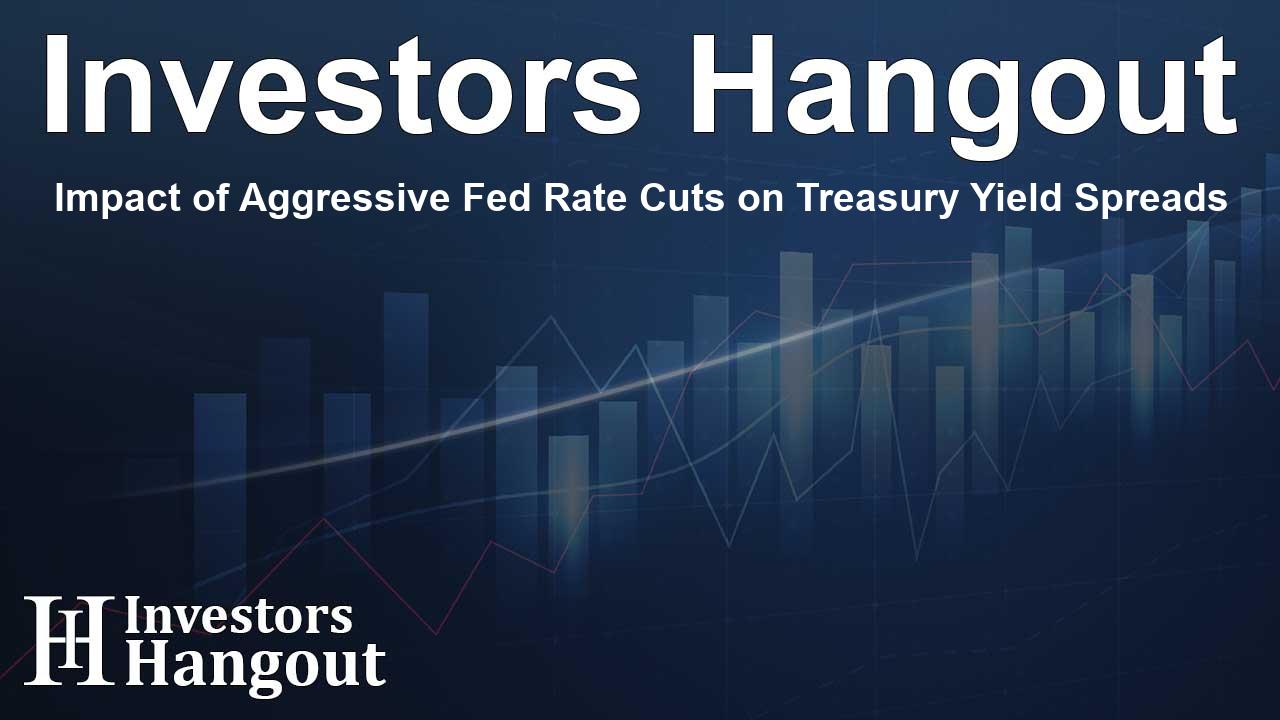Impact of Aggressive Fed Rate Cuts on Treasury Yield Spreads

The Impact of the Federal Reserve's Rate Cuts
Recently, the Federal Reserve made headlines with its decision to significantly cut interest rates. Analysts from Bank of America believe this move could have substantial effects on the yield spreads of US Treasury bonds. This action is particularly important as it shapes investor behavior and influences market dynamics.
Defining Treasury Yield Spreads
Treasury yield spreads are simply the differences in yields across various maturities of US Treasury bonds, notably between the 2-year and 10-year notes. This spread is closely watched because it acts as a barometer for investors’ expectations regarding future economic growth. A widening spread generally signals that investors foresee stronger growth ahead.
Current Reactions in the Market
In light of the Federal Reserve's recent announcement to slash rates by 50 basis points, the yield spread between the sensitive 2-year note and the benchmark 10-year US Treasury yield has notably widened. This represents the steepest level seen since 2022, clearly indicating that investors are responding positively to the Fed's bold approach. A steepening yield curve often reflects increasing confidence among investors about growth potential stemming from these cuts.
Insights from Bank of America
Bank of America's analysts suggest that such a significant rate reduction benefits yield spreads. It not only improves the technical performance of investment-grade assets but also bolsters the economic fundamentals underneath. In their communication to clients, they emphasized that such a rate cut fosters healthier demand for US Treasuries.
Looking Ahead: Future Rate Reductions
The analysts pointed out that the Fed's updated dot plot hints at a possible quick easing cycle in the near future. They forecast that policymakers might aim for an additional 100 basis points in cuts by the end of next year, implying a series of 25-basis point reductions in upcoming meetings. This outlook is rather aggressive when lined up against current market expectations, which are anticipating about 120 basis points of cuts in 2024.
Understanding Bear Steepening
The Fed's recent decisions have led to a bear steepening of the US yield curve. This term refers to a scenario where long-term yields rise faster than short-term yields. For investors, this change is often seen as a positive signal since it suggests an increasing appetite for riskier assets due to more appealing yields.
Effects on Foreign Investors
This bear steepening trend also boosts demand from foreign investors, as it lowers the costs associated with foreign exchange hedging. With more attractive yields available, international investors find US Treasuries increasingly attractive, further enhancing market conditions.
Final Thoughts
The Federal Reserve's recent move to implement such significant rate cuts marks a crucial moment for the market. Understanding how these changes influence Treasury yield spreads can offer valuable insights for investors. As we observe potential future rate movements and market reactions, staying informed will be essential for navigating the shifting landscape of US monetary policy.
Frequently Asked Questions
What is the significance of a 50 basis point rate cut?
A 50 basis point rate cut by the Federal Reserve points to a major shift in monetary policy aimed at boosting economic growth, consequently affecting investment markets and Treasury yields.
How do Treasury yield spreads affect investments?
Treasury yield spreads help investors assess economic expectations and influence their investment choices, particularly concerning risk assessment and timing in the market.
Why is the 2-year and 10-year yield spread monitored?
The yield spread between the 2-year and 10-year bonds is a crucial economic indicator; a widening spread often reflects investor optimism regarding future growth.
What does a bear steepening yield curve indicate?
A bear steepening yield curve, where long-term yields rise faster than short-term yields, signals a growing demand for riskier assets, typically driven by economic optimism.
How do foreign investors react to US Treasury yields?
Higher Treasury yields attract foreign investors who are seeking better returns, which can subsequently strengthen demand for US government securities.
About The Author
Contact Dominic Sanders privately here. Or send an email with ATTN: Dominic Sanders as the subject to contact@investorshangout.com.
About Investors Hangout
Investors Hangout is a leading online stock forum for financial discussion and learning, offering a wide range of free tools and resources. It draws in traders of all levels, who exchange market knowledge, investigate trading tactics, and keep an eye on industry developments in real time. Featuring financial articles, stock message boards, quotes, charts, company profiles, and live news updates. Through cooperative learning and a wealth of informational resources, it helps users from novices creating their first portfolios to experts honing their techniques. Join Investors Hangout today: https://investorshangout.com/
The content of this article is based on factual, publicly available information and does not represent legal, financial, or investment advice. Investors Hangout does not offer financial advice, and the author is not a licensed financial advisor. Consult a qualified advisor before making any financial or investment decisions based on this article. This article should not be considered advice to purchase, sell, or hold any securities or other investments. If any of the material provided here is inaccurate, please contact us for corrections.
